Related Research Articles
Xerox art is an art form that began in the 1960s. Prints are created by putting objects on the glass, or platen, of a copying machine and by pressing "start" to produce an image. If the object is not flat, or the cover does not totally cover the object, or the object is moved, the resulting image is distorted in some way. The curvature of the object, the amount of light that reaches the image surface, and the distance of the cover from the glass, all affect the final image. Often, with proper manipulation, rather ghostly images can be made. Basic techniques include: Direct Imaging, the copying of items placed on the platen ; Still Life Collage, a variation of direct imaging with items placed on the platen in a collage format focused on what is in the foreground/background; Overprinting, the technique of constructing layers of information, one over the previous, by printing onto the same sheet of paper more than once; Copy Overlay, a technique of working with or interfering in the color separation mechanism of a color copier; Colorizing, vary color density and hue by adjusting the exposure and color balance controls; Degeneration is a copy of a copy degrading the image as successive copies are made; Copy Motion, the creation of effects by moving an item or image on the platen during the scanning process. Each machine also creates different effects.

Xerography is a dry photocopying technique. Originally called electrophotography, it was renamed xerography—from the Greek roots ξηρόςxeros, meaning "dry" and -γραφία-graphia, meaning "writing"—to emphasize that unlike reproduction techniques then in use such as cyanotype, the process of xerography used no liquid chemicals.
Wallace "Wally" Berman was an American experimental filmmaker, assemblage, and collage artist and a crucial figure in the history of post-war California art.

Elaine Frances Sturtevant, also known professionally as Sturtevant, was an American artist. She achieved recognition for her carefully inexact repetitions of other artists' works.
Aya Takano is a Japanese painter, Superflat artist, manga artist, and science fiction essayist. Aya Takano is represented by Kaikai Kiki, the artistic production studio created in 2001 by Takashi Murakami.

The Diana of Versailles or Artemis, Goddess of the Hunt is a slightly over-lifesize marble statue of the Roman goddess Diana with a deer. It is currently located in the Musée du Louvre, Paris. The statue is also known as Diana with a Doe, Diana Huntress, and Diana of Ephesus. It is a partially restored Roman copy of a lost Greek bronze original attributed to Leochares, c. 325 BC.
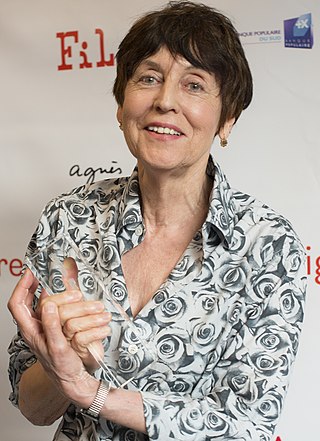
Annette Messager is a French visual artist. She is known for championing the techniques and materials of outsider art. In 2005, she won the Golden Lion Award at the Venice Biennale for her artwork at the French Pavilion. In 2016, she won the prestigious Praemium Imperiale International Arts Award. She lives and works in Malakoff, France.
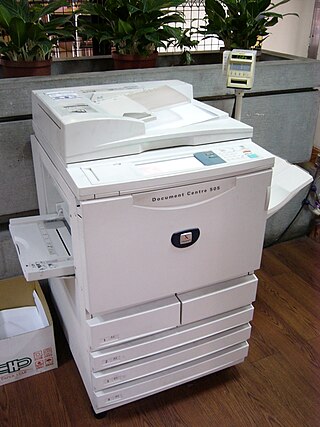
A photocopier is a machine that makes copies of documents and other visual images onto paper or plastic film quickly and cheaply. Most modern photocopiers use a technology called xerography, a dry process that uses electrostatic charges on a light-sensitive photoreceptor to first attract and then transfer toner particles onto paper in the form of an image. The toner is then fused onto the paper using heat, pressure, or a combination of both. Copiers can also use other technologies, such as inkjet, but xerography is standard for office copying.
Elizabeth H. Lidow was an American artist.
Molly Springfield is an American artist whose work includes labor-intensive drawings of printed texts and visual explorations of the history of information and mediated representation.
Kay Kurt is an American new realist painter known for her large-scale candy paintings.
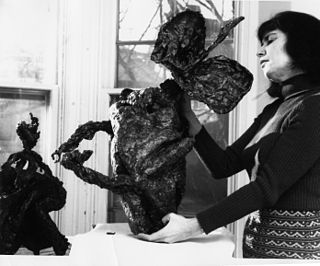
Sarah Jeanette Jackson, was an American-Canadian artist. Jackson first became known for her sculptures and drawings, and then for her photocopy and digital art. She was an early user of the photocopier to make art, and used this practice to embrace mail art.
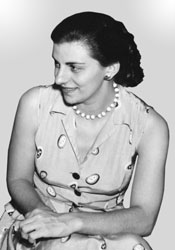
Grace Renzi, married name Grace Kantuser, was an American painter.

Nancy Rubins is an American sculptor and installation artist. Her sculptural works are primarily composed of blooming arrangements of large rigid objects such as televisions, small appliances, camping and construction trailers, hot water heaters, mattresses, airplane parts, rowboats, kayaks, canoes, surfboards, and other objects. Works such as Big Edge at CityCenter in Las Vegas contain over 200 boat vessels. Stainless Steel, Aluminum, Monochrome I, Built to Live Anywhere, at Home Here, at the Albright-Knox Art Gallery in Buffalo, contains 66 used aluminum boats and rises to a height of 30 ft.
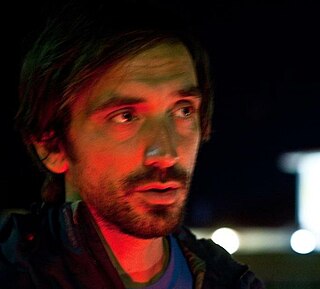
Bertrand Planes is a French visual artist who lives and works in Paris, France. His artworks often involve subverting and finding new uses for everyday objects.
Louise Odes Neaderland is an American photographer, printmaker, book artist and founder of the International Society of Copier Artists (I.S.C.A.) and the I.S.C.A. Quarterly, a collaborative mail, book art, and copy art publication. She was the organizer of ISCAGRAPHICS, a traveling exhibition of xerographic art.

Klaus Urbons is a German photographer and xerography printmaker. He is a pioneer and leading figure of copy art in Germany and not only. He founded the Museum für Fotokopie, and is the author and translator of books on the history of Copy Art and photocopiers, as well as a curator and a collector.
Johanna Grawunder is an American architect, artist, and designer known for her work in lighting.

Anna Parkina is a Russian artist who lives and works in Moscow. She uses collage as her key artistic method but also works in a variety of media, including performance, sculpture and video.

The Oval Court is an artwork created between 1984 and 1986 by British artist Helen Chadwick. The work was part of Chadwick's first major solo exhibition entitled Of Mutability, held at the Institute of Contemporary Arts in London. Chadwick received a Turner Prize nomination in 1987 for the exhibition, making her one of the first women nominated for the prize. The work is currently in the collection of the Victoria and Albert Museum in South Kensington, London.
References
- 1 2 3 4 5 6 7 8 9 10 11 Yardly, William (2014-09-23). "Pati Hill, Author Turned Artist of the Photocopier, Dies at 93". The New York Times .
- 1 2 3 4 5 6 7 8 9 10 11 12 13 14 15 16 17 18 Hartz, Jill (2000). Pati Hill: Wall Papers. Bayly Art Museum.
- 1 2 3 4 5 6 7 8 9 10 11 12 13 14 15 16 17 18 Torchia, Richard (2014-12-18). "Parti Hill (1921–2014)". Artforum . New York: Artforum International Magazine.
- 1 2 3 4 5 Slosberg, Steven (2016-04-03). "Steven Slosberg: In her heyday, Pati Hill was hard to overlook". The Westerly Sun. Westerly, RI: The Westerly Sun.
- 1 2 Marder, Irving (1975-03-28). "Portrait of the Artist As a Family of Three". International Herald Tribune . Paris. p. 5.
- 1 2 "The Editor's Guest Book". Harper's Bazaar: 91. 1956.
- ↑ "OBITUARY: Paul Bianchini, 72, Pop Art Dealer, Dies". The New York Times . 2000-09-12.
- 1 2 3 McCray, Marilyn (1979). Electroworks. International Museum of Photography at George Eastman House. ISBN 0-935398-01-5.
- 1 2 Eichelberger, Clayton (1957-08-25). "Outstanding Trio For Style, Polish". Dallas Times Herald .
- 1 2 Forbes, Harriet (1955-09-15). "Hill, Pati. The Pit and the Century Plant". The New Yorker .
- ↑ Deal, Borden (1957). "In the Heart of Dixie". The New York Times .
- 1 2 3 Schott, Webster (1957-07-21). "Impressive Debut: First Novel About Rural South". St. Louis Post-Dispatch . St. Louis.
- ↑ Poore, Charles (1957-07-09). "Books of The Times". The New York Times . p. L27.
- 1 2 Piepenbring, Dan (2014-09-24). "Pati Hill, 1921–2014". The Paris Review . The Paris Review.
- 1 2 3 4 5 6 7 Torchia, Richard. "Pati Hill Exhibition News Release" (Press release). Arcadia University Art Gallery. Retrieved 2016-04-09.
- 1 2 McGonigle, Thomas (1981). "Ezra Pound Knows and Why Pati Hill". Arts Magazine. 55: 128–129.
- 1 2 3 4 5 6 Bailey, Anthony (1980-08-04). "Copies". The New Yorker .
- 1 2 Newhall, Edith (2016-03-17). "Pati Hill at Arcadia University Art Gallery". ARTnews . ARTnews LTD.
- ↑ Hershman, Marcie (1976-09-26). "Aim is high, on target". The Boston Sunday Globe .
- ↑ Popper, Frank (1983). "Pati Hill". Electra. p. 356.
- 1 2 Hill, Pati (1994). La Disparition De L'Alphabet. Paul Bianchini Galerie Toner.
- 1 2 3 Rigal, Christian (1982). "Photocopy Versailles? Why not!". The Paris Free Voice.
- ↑ "Pati Hill". Arts Magazine. 51: 31. 1976.
- ↑ Burnside, Madeleine (1976). "Pati Hill, Photocopied Garments". ART News. 75: 140–141.
- ↑ "Pati Hill: Photocopier". Arcadia University Art Gallery. Arcadia University Art Gallery. Retrieved 2016-04-09.
- ↑ "Three exhibits to see right now at the Lyman Allyn Museum". The Day. 2018. Retrieved 2019-03-31.
- ↑ Bianchini, Paul (1993). Le Dernier Souper. Paul Bianchini Galerie Toner.
- ↑ "Un Cygne, June 1980". Princeton University Art Museum. The Trustees of Princeton University. Retrieved 2016-03-10.